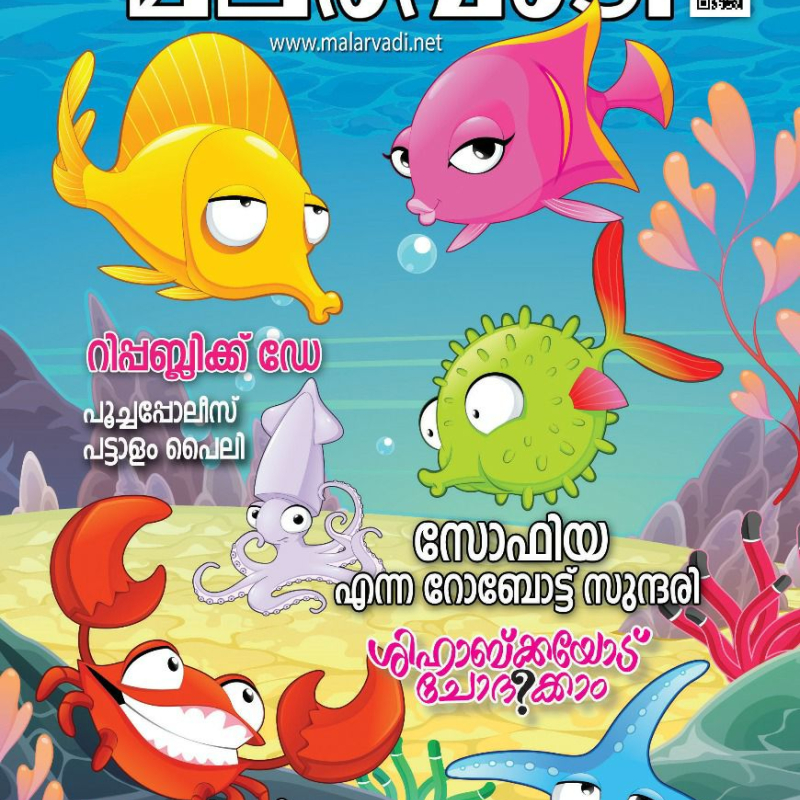Children’s literature, as a category, is often relegated to the position of ‘minor’ literature in the literary canon. The narratives and voices of children are conventionally thought of as ‘immature’ or ‘innocent’. As an extension of this perspective, the roles and motives of children’s magazines are also perceived in a very reductive sense—that they are either for entertainment or for a didactic purpose. Hence, most often, children’s literature serves the purpose of constructing childhoods that are temporally and spatially desirable. Childhood is often regarded as a homogenous category by mainstream children’s literature, where the experience of every child is represented as being similar. Thus, by homogenizing and universalizing the experiences of children across the world, the dominant children’s narratives have erased the differences between intersections of religion, caste, class, gender, race, etc. This article shows that there is no homogeneous childhood and different childhoods exist in the same period and context. The following section of this article focuses on the emergence of childhoods and its historicity.
Conceptualising Childhood
Philippe Aries in his book, Centuries of Childhood, analyses the concept of childhood and its evolution. The book conveys how the concept of childhood developed historically and discusses the way childhood has been narrated in the past centuries. Family has always been understood as the basis of society. Philippe Aries argues that units like family and categories like childhood did not exist till the medieval times and that it was modern liberal notions that constructed it. The concept of childhood(s) itself has undergone changes over time. He elaborates this point through a historical analysis of childhood across various centuries. He says that European society did not have a separate category called/understood as ‘childhood’ until about the twelfth century and medieval art did not portray children and childhoods up until the end of the thirteenth century. In the medieval age children were not characterized by any special expression of childhood but only as men in a reduced size; that is, the child was viewed as a smaller version of the adult. In French medieval art, the soul was depicted as a little child who was naked and unusually sexless.[i] In the sixteenth and seventeenth centuries the child or infant, at least in the upper classes of society, was given a special costume which marked him out from the adults. Later, a new concept of childhood appeared in which the child was accounted for ‘his’ sweetness, simplicity and drollery and these become a source of amusement and relaxation for the adult. The ‘coddling’ attitude towards children emerged at the end of the sixteenth, and particularly in the seventeenth centuries. People held that it was no longer desirable that children mingle with adults.[ii] The first concept of childhood characterized by ‘coddling’ had made its appearance in the family circle, in the company of little children. The second on the contrary sprang from a source outside the family, with church men or gentlemen of the robe.
In a nutshell, Phillipe Aries points out that the childhood that we experience and expect is historically constructed and there is no universal idea of childhood. Most of the time childhood is a tool to create and sustain certain political ideas and ideologies. Fouzi El-Asmar, in his essay titled ‘Portrayal of Arabs in Hebrew Children’s Literature’ looks at commercial Hebrew children’s literature published in Israel, which portrays the Arab character through the lens of Zionist perception of Arabs in general and Palestinians in particular. He argues that the Zionist movement has been largely successful in shaping international views on the Arab character in children’s literature. He says that, for example, children’s literature that is circulated among Israeli children portrays Palestinians as Bedouin, a nomadic community, which historically inhabited the Arabian and Syrian deserts. By portraying Palestinians as Bedouin, Zionism uses the perception that a Bedouin is not usually tied to a specific land. This way Israeli children’s literature teaches their children that Palestinians are not the real owners of the holy land or Palestine and the land belongs to the Jews. And the literature portrays Palestinians’ fight against Zionism and British occupation as ‘criminal gang war’ and these ‘gangs’ are ‘porters, cowards, and vagabond terrorists’.[iii] Representation of Palestinians in Israeli or Hebrew children’s literature is one of the best examples of how a politically mediated children’s literature represents minorities and their life worlds.
Deepa Sreenivas, in her article titled ‘Telling Different Tales: Possible Childhood in Indian Children’s Literature’ discusses how children’s literature in India addresses the urban, middle and upper caste child and the way it reflects his or her economic resources, family relationships, food habits, school, language, cultural experience, etc. She observes how children from other social backgrounds struggle to find a place in such an ‘avant-garde’ culture. In order to procure a place in mainstream culture, children from marginalized backgrounds have to show some ‘extra power’ or ‘smartness’ that helps to overcome their physical and social disability.[iv]
The above discussions show the politics of construction of childhood mediated through children’s literature. The experience of childhood is not unique and it depends on different ideology, perception, etc. In the next part, I focus on children’s magazines in Kerala and the nature of childhoods represented for its readers.
Different Childhoods in Kerala
In Kerala there are many children’s magazines published by different newspapers and organisations. Here I am choosing a few children’s magazines. Balarama is a Malayalam comic magazine (Fig. 1), published by M.M. Publications of the Malayala Manorama Group located in Kottayam district of Kerala. Having started out as a monthly in 1972, it turned into a fortnightly in 1984, before becoming a weekly in 1999. In Kerala, earlier attempts to publish Malayalam periodicals for children had been failures. However, it was the comic magazine Poompatta that established successful readership figures for the first time. Poompatta was started in 1964 by Achutha Variyar. Later, Pai and Pai Company took over its publishing. N.M. Mohan was the editor of Poompatta then. But, later he left the magazine and joined Balarama as its editor-in-chief. Now, Poompatta is published from Thrissur by Sooryaprabha Publications, Thrissur.
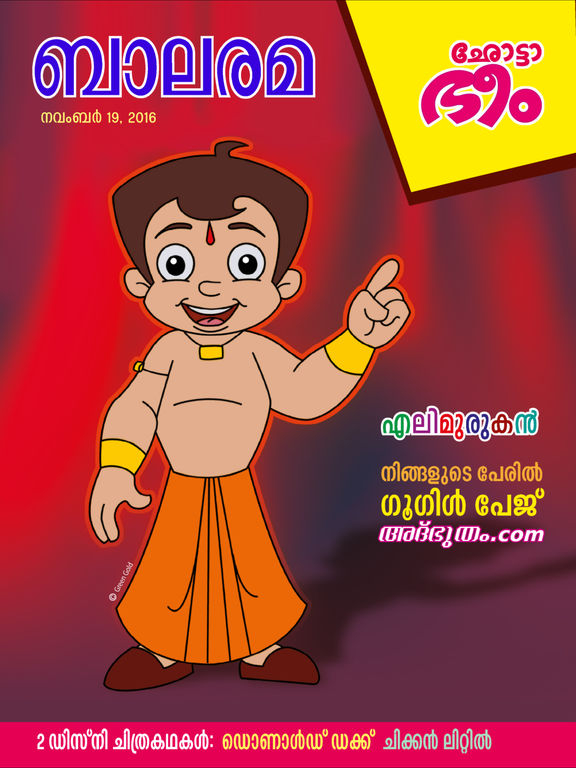
Balarama is one of the most widely circulated children’s magazines in Kerala. A breakthrough for the magazine was when it began syndicating American magazines, followed by the inclusion of graphic strips such as ‘Spiderman’, ‘Phantom’, ‘Alice in Wonderland’, etc. Balarama is also known for its decade-long partnership with Amar Chitra Katha as well. Amar Chitra Katha (Fig. 2) is well-known as a project that aimed at introducing children to ‘Indian’ values. Nandini Chandra observes that Amar Chitra Katha constructed Hindu superheroes who fought against foreign oppression, where the ‘foreigner’ was the asura (Indian version of a mythical demon), Muslim or British, and the superhero fought on behalf of Hindus or those under the protective net of Hindu rulers.[v] She explores the way Amar Chitra Katha naturally organizes its images, narratives and myths to make the transition from the Hindu to the national.
Deepa Sreenivas in her study about Amar Chitra Katha discusses how the magazine narrates the ‘glorious’ past of India through the Hindu mythological lens. And this narration about the past suggests a certain movement to the present. Amar Chitra Katha misrepresents or neglects minority characters in the construction of the past.[vi] Balarama's association with Amar Chitra Katha effectively patronizes this construction of nationalist childhoods.
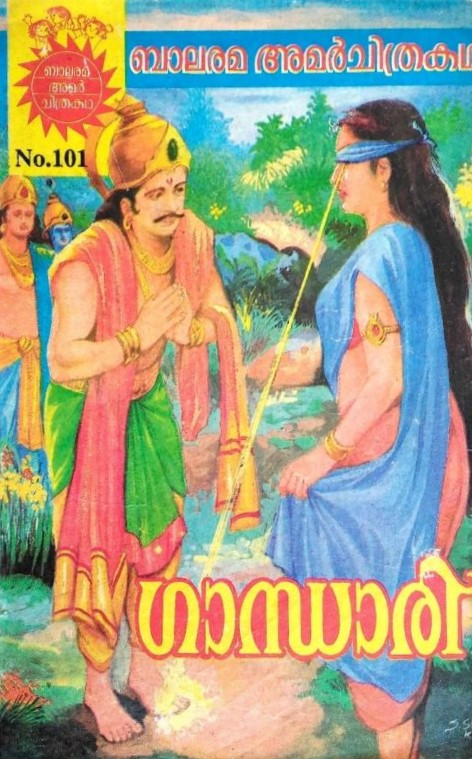
The Kerala Sastra Sahitya Parishad (KSSP) was formally inaugurated on September 10, 1962, at Calicut (now known as Kozhikode). The primary objective of the organisation is to develop a scientific culture among lay people. Initially, the activities of the group were limited to conducting symposiums, seminars and talks related to science. During this time, membership to the organisation was limited to science writers, and it gave associate membership to those interested in science. In 1967, KSSP obtained a constitution. The Workers Manifesto of KSSP 1982 discusses the characteristics of KSSP:
KSSP is not a political party though KSSP's projects and work can help political parties, and KSSP is not a welfare and educational organisation though it conducts many welfare and educational programs. It is not a research organisation, even though it conducts various studies on different issues. Finally, it is not an anarchist organisation, but it develops a scientific temper among readers.[vii]
In 1970, the group started a magazine called Eureka (Fig. 3) for upper primary students. Its first copy was released in June 1970; Dr K.N. Pisharadi was the first chief editor, and T.R. Shankunni was the managing editor. Along with Eureka, the organisation also publishes other magazines namely Sasthragathi and Sasthrakeralam. In 1973, the organisation adopted the motto, ‘Science for social revolution’.
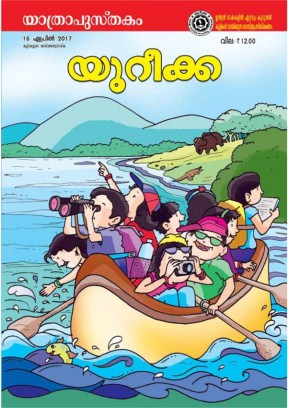
The Parishad considered children’s literature and children’s magazines as effective sites for propagating its scientific and rational ideologies. The right time to instill ideologies is during the formative period of an individual. In their attempt to reach out to children, the first step was the publication of a quarterly science journal for school children called Sasthragathi in Malayalam in 1966. It was the first comprehensive science magazine in Malayalam. The Parishad also started the publication of another magazine called Sasthrakeralam in 1969 for a general audience. Sasthragathi cannot be called an exclusively children’s magazine; its major readership comprised secondary school students and the public at large.[viii]
The January 1972 issue of Eureka states the objective of the magazine precisely,
Science is an essential part of today’s life. Science and technology touch and influence each nook and corner of life. But still, science education is far away from the common man’s life. To bridge this disparity science should teach in their language and style. To increase the pupil’s scientific consciousness also means to make them more human.[ix][x]
So far we have seen that these magazines targeted school students and the learning of science. In one sense it can be said that the magazine was introducing a different kind of pedagogy for the teaching of science. But more than that it tries to build an inclination towards the learning of science subjects and enhance scientific consciousness among students.[xi]
To elucidate my points I would like to bring in a few examples from Eureka and Balarama. During my field work the present editors of Eureka expressed their disagreement with Balarama and other popular children’s magazines because these magazines try to create a fantasy-oriented and mythological childhood. We see several stories and narratives from Hindu mythology in Balarama. For example, the September 1977 issue of Balarama included an article titled ‘Hari Sree’. The article has a picture of a boy sitting on an aged teacher’s lap and writing something on a plate and in the background the boy’s mother is eagerly watching his attempt at writing. They are sitting near a lit up nilavilakku, (a traditional lamp commonly used for Hindu and Christian ceremonies in Kerala). The picture's context is the ceremony of vidhyarambham (a Hindu tradition observed on vijayadashami day, mainly in south India, where children are formally introduced to the learning of music, dance, language, etc.). During the ceremony, an old man, called Asan, holds the hand of the little one and makes him write the first letter of the Malayalam language on rice grains using his index finger. Here, the author remembers his own vidhyarambham ceremony and he explains that nowadays, instead of learning the first letter ‘aa’, one of the complicated letters in Malayalam script, people learn the letter ‘ra’, the easiest letter of the script. Then he discusses the reason for the opening prayer of vidhyarambham—‘harisree ganapatheya nama’. He says that the Lord Ganapathi is the lord of vidya (knowledge) and he will help us to do anything without any obstruction. Here the magazine presents an ‘ideal’ way of starting schooling and an ‘ideal’ student who prays to Lord Ganapathi for a successful education.
The issue of Eureka published on September 1976 includes an article about the eclipse. It mentions two narratives about eclipses. One is by a grandmother and another one by an adolescent boy. The grandmother’s narration about eclipses goes like this: one day the devas (gods) see an Asura, namely Rahu, drinking Amrita (the drink of immortality). The angry devas kill Rahu. But Amrita grants him rebirth. The crazed Rahu tries to swallow the moon and the sun, but he fails. This act is ascribed to be the reason for lunar and solar eclipses. The grandmother narrates this story to a younger child. Immediately after the elder boy calls the younger one and describes his understanding of the eclipse. It is a scientific explanation of the eclipses. He narrates that during the lunar eclipse, the moon passes directly behind the earth into its umbra. It can happen only when the sun, earth and moon are aligned. A solar eclipse occurs when the moon passes between the sun and the earth and when the moon fully or partially blocks the sun. Then the elder one advises the younger boy, ‘This is the ‘real’ reason for eclipses; if you want, you can teach this to grandmother’. These two examples show the way both magazines use mythology to create and cater to their own ideas of childhood. The first example uses mythology as a tool to create an ‘ideal’ childhood by endorsing it and the second example rejects mythology to construct a ‘scientific’ and ‘rational’ childhood.
Owing to the changing socio-political scenario and constitution of the public sphere, the 1980s witnessed the emergence of several children’s magazines published by different Muslim organisations of Kerala. Malarvadi and Kurunnukal are two Muslim children’s magazines, with wide circulation and readership. These are published by two major Muslim organisations in Kerala, i.e. Jamaat-e-Islami and Samastha Kerala Jamiyyathul Ulama, respectively.
Malarvadi is the first Muslim children’s magazine in Malayalam. It is owned and published by Jamaat-e-Islami, Kerala chapter since 1980. Jamaat-e-Islami is an influential Islamist organisation in India today, founded in 1941 by Syed Abul Ala Maududi with the aim of spreading Islamic values in the subcontinent. Re-organized after the Independence in 1948 as Jamaat-e-Islami Hind (JIH), it has been working actively with its multifaceted policies and programmes. Jamaat-e-Islami’s Kerala chapter came into existence in 1944 under the leadership of Haji Muhammad Ali. Using the existing network of social reform movement within the Muslim community, he established Jamaat-e-Islami in Kerala. Almost all the leaders of Jamaat-e-Islami were from the same reformist stream. Samastha Kerala Jamiyyathul Ulama, a traditional Muslim organisation, started a children’s magazine namely Kurunnukal in 2000. Both magazines use Islamic stories, histories of prophets, caliphates, Sufis, etc. to nourish their own versions of the ‘ideal’ child.
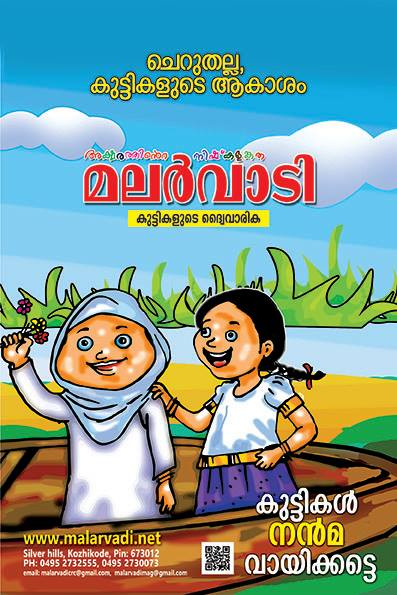
The Muslim children’s magazines that I mentioned above try to present a childhood that is more attuned to and relatable to its Muslim readers. It talks extensively about Islamic norms, ethics, brotherhood, beliefs, etc. Apart from this, it talks about other communities’ festivals and their importance. For example, Malarvadi publishes special issues during Onam and Christmas. During my field work, the editors of both magazines expressed their discontent with magazines like Balarama and Eureka. One of them said, ‘There are children’s magazines that narrate apasarpakathakal (unrealistic stories) and only science to readers. Kurunnukal and Malarvadi were started to teach goodness to children’. Both these children’s magazines give space and provide role models for Muslim children, who do not find suitable or ideal role models in mainstream children’s literature in Kerala. These magazines present prophets, imams, and caliphates, etc. as role models.
The magazine Malarvadi includes novels and stories by famous Malayalam writers. It published M.T. Vasudevan Nair’s Daya Enna Penkutti (A Girl Named Kindness). The early issues of the magazine included an interactive session with poet Kunjunni and was called Kunjunni Mashum Kuttikalum (Kids and Kunjunni Master). The magazine conducts outdoor and indoor programmes under the banner of Malarvadi Bala Sangham and it has different units throughout Kerala. The magazine is mostly circulated through local agents, madrasas, or Muslim religious educational institutions. Similarly, the magazine Kurunnukal by Samastha Kerala Jamiyyathul Ulama also presents different childhoods and their life-worlds that are not visible in mainstream children’s magazines like Balarama and Eureka which are guided by ‘modern’ notions of ‘secularism’ and rationality that deny community and communitarian experiences.
In short, these two children’s magazines are the result of mis/under representation of minority lives and cultures and a hegemonic idea of a homogeneous childhood represented by mainstream children’s magazines. The magazines that I have discussed—Malarvadi and Kurunnukal—present different ideas of childhood to its readers. Different organisations and groups use childhood and its articulations as a powerful tool to shape young minds of future generation. And these different narrations and articulations co-exist within the same period and space.
Notes
[i] Aries, Centuries of Childhood, 34.
[ii] Ibid., 34.
[iii] El-Asmar, The Portrayal of Arabs in Hebrew Children’s Literature, 92.
[iv] Sreenivas, 'Telling Different Tales', 317.
[v] Chandra, The Classic Popular Amar Chitra Katha 1967–2007, 18.
[vi] Sreenivas, Sculpting a Middle Class, 89.
[vii] Translated by the author.
[viii] Jawhar, ‘The Ideology of Eureka’, 1.
[ix] Translated by the author.
[x] Editorial, Eureka, January 1972, 1.
[xi] Jawhar, ‘The Ideology of Eureka’, 3.
Bibliography
Aries, Philippe, Centuries of Childhood. Harmondsworth: Penguin, 1973.
C.T., Jawhar. ‘The Ideology of Eureka: The Role of Children’s Magazine in Creating Scientific Awareness among Children in Kerala’ (unpublished work). Hyderabad: Hyderabad Central University, 2012.
Chandra, Nandini. The Classic Popular Amar Chitra Katha 1967–2007. UK: Cambridge University Press, 2008.
El-Asmar, Fouzi. ‘The Portrayal of Arabs in Hebrew Children’s Literature’. Journal of Palestine Studies 16, no.1, (Autumn 1986): 81–94.
Samad, Abdul. Islam in Kerala: Groups and Movements in the 20th Century. Kollam: Laurel Publications, 1998.
Sreenivas, Deepa. Sculpting a Middle Class—History, Masculinity and the Amar Chitra Katha in India. New Delhi: Routledge, 2010.
Sreenivas, Deepa. ‘Telling Different Tales: Possible Childhoods in Children’s Literature’. Childhood 18, no.3, New York: Sage Publications, 2011.
